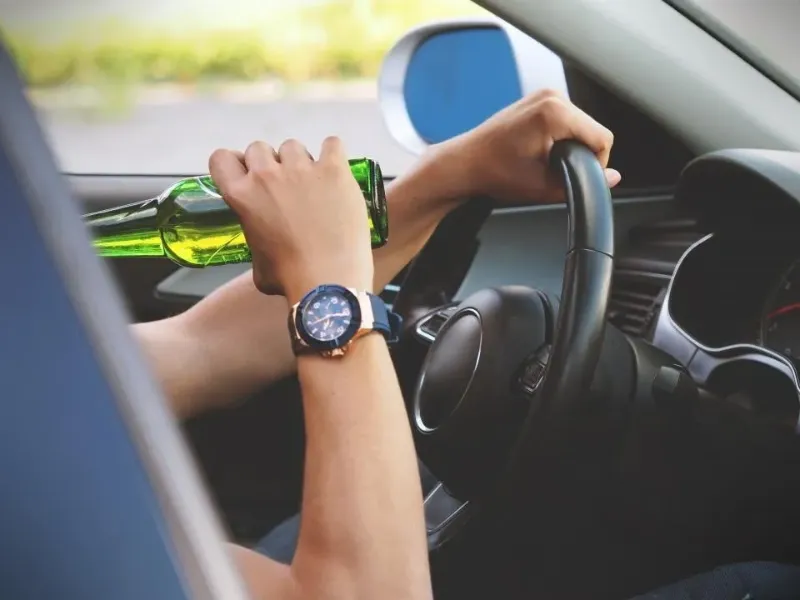Amidst the fear and panic brought on by our worldwide epidemic, COVID19, another epidemic, which has been around much longer and taken many more lives, has gone unnoticed by society at large, as of late. People die EVERYDAY on Texas roads. In fact, according to the Texas Tribune, since November 8, 2000, at least one person has died EVERY SINGLE DAY on Texas roads. Research shows that there are four (4) common causes of fatal crashes on Texas highways, as well as 4 common groups of travelers that are at higher risk to die in a crash on a Texas roadway. Below is a discussion of these issues, as well as some suggestion as to what we can do as drivers to be safer and what the groups can do as roadway travelers, to be safe.
1. Common causes of fatal crashes on Texas Roadways
a. Speeding

Excessive speed is the number one cause of fatalities on Texas roadways. According to the Houston Chronicle, the number of fatalities caused by speeding has actually increased in 2020 (https://www.houstonchronicle.com/news/transportation/article/With-traffic-so-low-officials-expected-roadway-15197318.php). As drivers, we are responsible to maintain safe speeds, to protect, not only ourselves, but also those in our cars and those on the roads around us.
b. Failing to Stay in One Lane

The reason these are so dangerous is because the one causing the wreck, typically, has not made sure the path was clear, before changing lanes, so they are going full speed; they are not able to take any evasive action or if evasive action is taken, it is typically faulty. The fewest corrective measures are taken in failing to maintain lane collisions, because when these occur, the driver causing the wreck is typically unaware that they are about to kill someone. Most common causes of failure to maintain lane crashes are driving while intoxicated, driving while drowsy, failure to pay attention, and failure to properly check the blind spot. This is also something you see, more often, when someone is driving a car they are not used to, like a rental car or the car of a friend or family member, so they are not aware of the blind spots.
c. Distracted Driving

We are seeing annual increases in the number of traffic fatalities caused by distracted driving. Distracted driving comes in many forms, including texting while driving, talking while driving, trying to control kids or pets, while driving, basically anything that takes your hands off the wheel, your eyes off the road, or your mind off the drive, can lead to distracted driving. Driving while distracted leads to a drastically decreased reaction time. It is estimated that a car, traveling 55 miles per hour, can travel over 100 yards, the length of a football field, while a driver looks down to read one short text message. Taking your eyes off the road, for even five seconds, can have deadly circumstances.
d. Driving While Intoxicated

Driving while intoxicated leads to the deaths of 100s of people, on Texas roads, every year. The very large majority of these senseless deaths can be avoided. The easiest choice…don’t drink and drive. Have a designated driver. Call a ride share, like Uber or Lyft. Call a cab. Stay in a hotel. Ride home with a sober friend. Stay where you are. Stay at home. If you chose to drive, after drinking only two drinks (for some people), your vision, reaction time, and ability to process are all greatly decreased and as you take more drinks, those abilities continue to decrease exponentially.
2. Parties More Likely to be Victims of this Epidemic
a Pedestrians

According to the Star Telegram (https://www.star-telegram.com/news/state/article236657743.html), “Texas is ranked as the eighth most dangerous state for pedestrians.” This is a scary and sobering statistic. As far as travelers on Texas roadways, pedestrians have the least protection; no helmets, nothing to help them move faster to get away, besides their feet, nothing protecting their bodies. Since they are the least protected, they deserve the most attention. We, as drivers, need to keep our eyes on the look out for those walking, either by choice or because they have no other mode of transportation available.
b. Bicyclists

According to the Texas Tribune (https://www.texastribune.org/2019/11/08/texas-road-deaths-and-suvs-pickups-duis-pedestrians-and-cyclists/), “the number of people killed while biking, in Texas, has increased by 40%.” Cyclists are the second least protected travelers on the Texas roads. They can wear helmets and bicycles do move faster than feet, but they still have minimal protection, when coming against an 80,000 pound tractor trailer. Cyclists need to follow the rules of the road and drivers need to be aware of their 2-wheeled non-motorized counter parts. It is also important, in cities where bicycle lanes are marked, for motorized vehicles to respect those lanes.
c. Motorcyclists

According to The Statesman (https://www.statesman.com/news/20200725/crashes-take-heavy-toll-on-statersquos-motorcyclists-lubbock-among-cities-with-highest-number-of-fatal-accidents-txdot-says#:~:text=In%202019%2C%20412%20motorcyclists%20were,Paso%2C%20Corpus%20Christi%20and%20Odessa.), “In 2019, 412 motorcyclists were killed in Texas, and more than 1,800 were seriously injured.” Bikers are an overrepresented class in the victims of the Texas roadway fatalities epidemic. Besides the normal dangers that all Texas roadway travelers deal with, bikers have other dangers to be on the look out for, like spilled oil from broken brake lines or improperly tied down furniture, flying out of trailers and slamming directly into their bodies. Like the other overrepresented groups, bikers also have much less protection, when on the road; the only protection for their bodies is their clothes, any riding gear, and a helmet, if they choose to wear one.
d. People in Rural Areas

According to the Texas Tribune (https://www.texastribune.org/2019/11/08/texas-road-deaths-and-suvs-pickups-duis-pedestrians-and-cyclists/), “more than half of the state’s traffic fatalities happen in rural areas. “When you look at the crashes on these rural roads, you see higher speeds, you have single lanes going two directions, you have no shoulders. Drivers are given very little room to make any errors yet are still doing the same things that they would be doing on the freeway.” Since I have been working on accident cases for almost 20 years now, and handled cases in many rural areas, I can understand why this class is included in the list of victims of the Texas roadway fatalities epidemic. Smaller roads give drivers less time to react and also allow less space to make up for faulty evasive action. Poor lighting and minimal to no visible lane separation markings make it almost impossible, at times, to see where each driver should be on the road.
3. What can we do to fight this epidemic?
I know, if you have read some of my other articles, I am starting to sound like a broken record, but we can be safer drivers all around and it will help beat this epidemic. We can plan out our route of travel BEFORE we leave. We can plan out activities, for the kiddos, to keep them occupied, so they do not distract us. We need to follow the rules of the road, to protect ourselves, as drivers, and others, on the roads, as well.
4. What can the under protected do to increase the protection?
Pedestrians, bicyclists, motorcyclists, and drivers in rural areas can all be hypervigilant. They can keep their eyes and ear open. They can minimize distractions as well, by not using ear buds or headphones and by keeping their phones in their pockets, so they can be aware of everything going on around them.
It is the responsibility of all who use the road to be aware and to be alert. We can all work together to end the epidemic of Texas roadway fatalities.
Stay safe!

